Concawe Reports
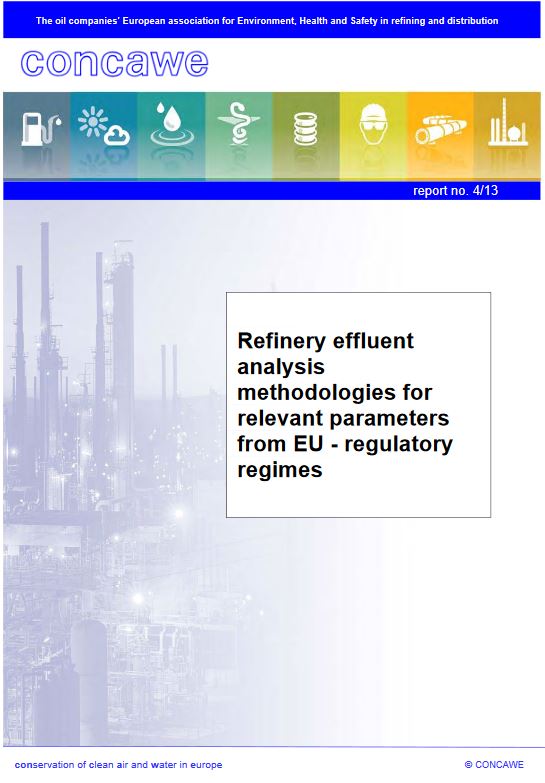
Reports
Refinery effluent analysis methodologies for relevant parameters from EU-regulatory regimes
Report no. 4/13: This report provides guidance to CONCAWE members on the analytical methods that might be used to monitor oil refinery effluents for those refinery-specific parameters covered by relev...

Reports
Predicting refinery effluent toxicity on the basis of hydrocarbon composition determined by GCxGC analysis
Report no. 2/13: A high resolution analytical method for determining hydrocarbon blocks in petroleum products by comprehensive two-dimensional gas chromatography (GCxGC) was used for the analysis of p...

Reports
Oil refining in the EU in 2020, with perspectives to 2030
Report no. 1/13: In the two decades to 2030, the EU refining industry will face significant changes in product demand, both in absolute terms and with regard to the relative demand for gasoline and di...

Reports
Use of the modified Ames test as an indicator of the carcinogenicity of residual aromatic extracts
Report no. 12/12: Existing data demonstrate that residual aromatic extracts (RAEs) can be either carcinogenic or non-carcinogenic. CONCAWE had previously concluded that “Although limited data availa...

Reports
Developing human health exposure scenarios for petroleum substances under REACH
Report no. 11/12: This report describes the approaches that were adopted by CONCAWE to prepare the human exposure estimates in the chemical safety assessments of the REACH registration dossiers for pe...
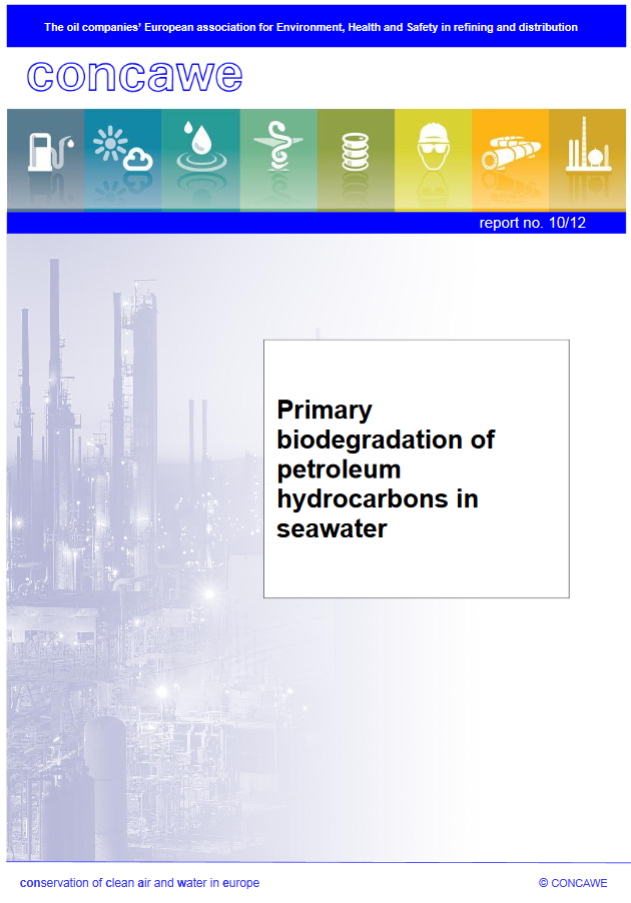
Reports
Primary biodegradation of petroleum hydrocarbons in seawater
Report no. 10/12: This report describes primary biodegradation experiments performed to determine the persistence of higher molecular weight petroleum hydrocarbons in seawater.
Results from the bio...
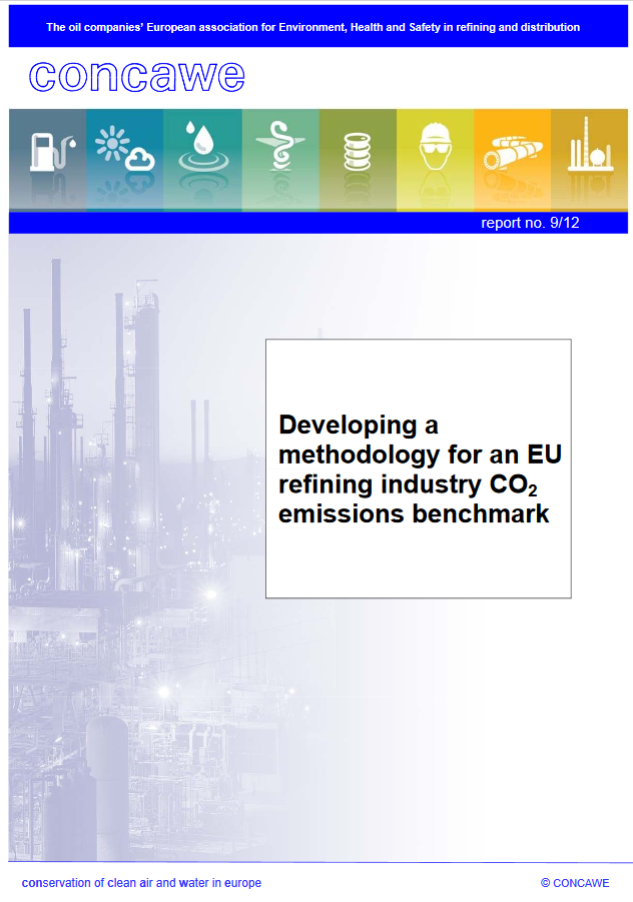
Reports
Developing a methodology for an EU refining industry CO2 emissions benchmark
Report no. 9/12: In the third trading period under the EU Emission Trading Scheme (EU ETS), refineries and other eligible industrial installations may be granted free CO2 emission allowances according...

Reports
REACH – Analytical characterisation of petroleum UVCB substances
Report no. 7/12: The purpose of this report is to summarise the findings of the scientific and technical work undertaken by CONCAWE to assess the feasibility and potential benefit of characterising pe...
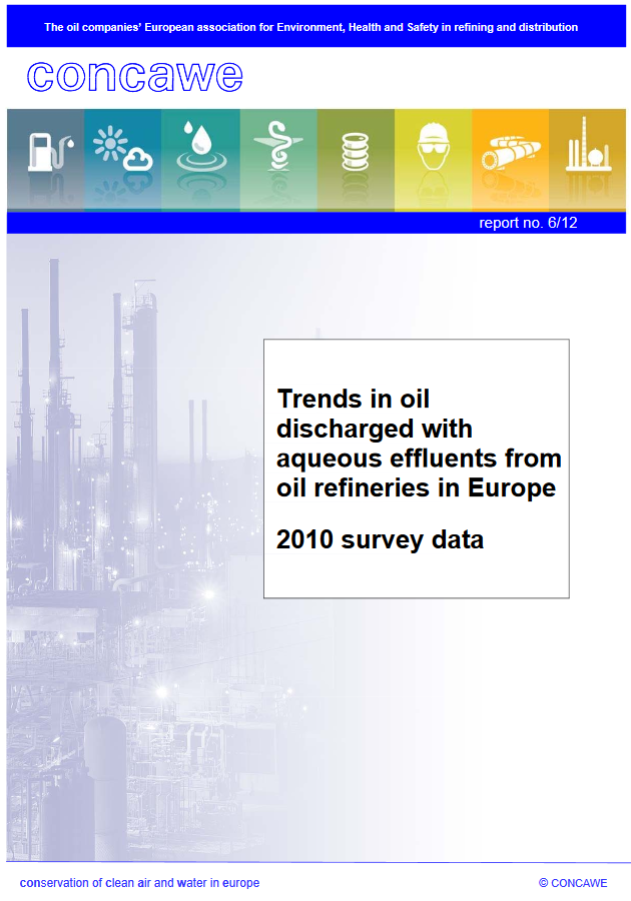
Reports
Trends in oil discharged with aqueous effluents from oil refineries in Europe – 2010 survey data
Report no. 6/12: This report summarises data gathered by CONCAWE in a 2010 survey of effluent water quantity, oil content and treatment processes for refinery installations situated in the EU-27 count...

Reports
European downstream oil industry safety performance – Statistical summary of reported incidents – 2011
Report no. 5/12: In this eighteenth annual report on European downstream oil industry safety performance, 2011 statistics are presented on work-related personal injuries for the industry’s own emplo...

Reports
Gasoline ether oxygenate occurrence in Europe, and a review of their fate and transport characteristics in the environment
Report no. 4/12: Ether oxygenates are added to certain gasoline (petrol) formulations to improve combustion efficiency and to increase the octane rating. In this report the term gasoline ether oxygena...
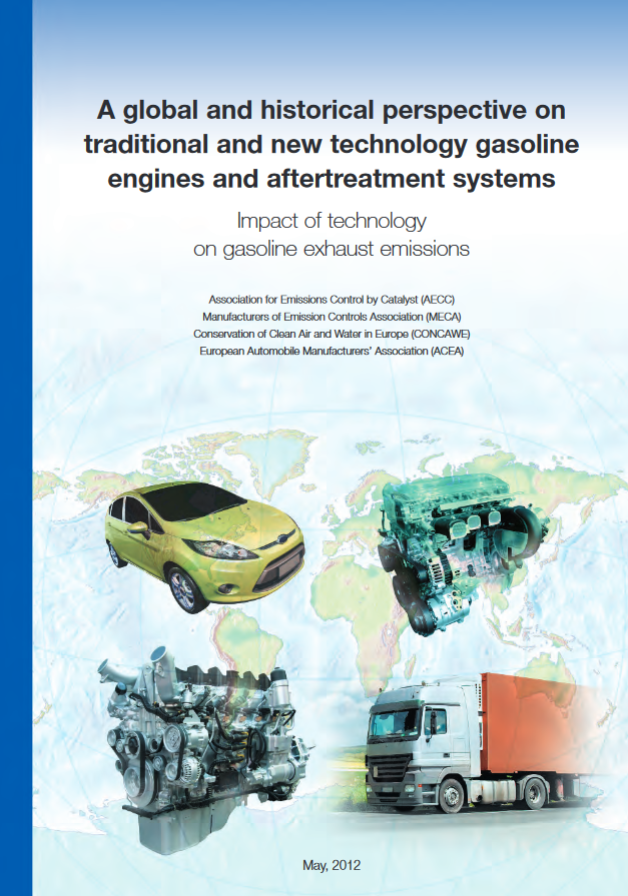
Reports
A global and historical perspective on traditional and new technology gasoline engines and aftertreatment systems
This report reviews the technologies available to meet the exhaust emissions regulations for gasoline-fuelled passenger cars, light-duty and heavy-duty vehicles, non-road mobile machinery and motorc...

Reports
A global and historical perspective on the exposure characteristics of traditional and new technology diesel exhaust
This report reviews the global and historical development of exhaust emissions regulations for diesel-fuelled heavy-duty vehicles, passenger cars, and related vehicles as well as the engine, aftertr...

Reports
EU refinery energy systems and efficiency
Report no. 3/12: The consumption of energy within EU refineries plays a crucial role in determining refinery operating costs and emissions and has therefore long been a focus of attention by refinery...

Reports
Gasoline volatility and vehicle performance
Report no. 2/12: A six vehicle study has been completed to investigate the impact of changes in the volatility characteristics of unleaded gasoline containing 10% v/v ethanol on regulated exhaust and...

Reports
Assessment of refinery effluents and receiving waters using biologically-based effect methods
Report no. 1/12: Within the EU it is apparent that the regulatory focus on the use of biologically-based effects methods in the assessment of refinery effluents and receiving waters have increased in...

Reports
Acute aquatic toxicity of heavy fuel oils summary of relevant test data
Report no. 9/11: This report describes the experimental procedures and results obtained in acuteecotoxicity tests on several heavy fuel oil (HFO) samples. Water accommodated fractions (WAFs) of these...

Reports
The potential for application of CO2 capture and storage in EU oil refineries
Report no. 7/11: CO2 Capture and Storage (CCS) is a potential route to large scale reduction of CO2 emissions to the atmosphere from large power generation and manufacturing facilities. It does, howev...

Reports
Cost effectiveness of emissions abatement options in European refineries
Report No. 6/11 This report explores the cost-effectiveness of emission reductions in European refineries associated with Best Available Techniques (BAT) and illustrates how Associated Emission Level...

Reports
European downstream oil industry safety performance Statistical summary of reported incidents – 2010
Report no. 5/11: In this seventeenth annual report on European downstream oil industry safety performance, 2010 statistics are presented on work-related personal injuries for the industry’s own empl...

Reports
A comprehensive review of European epidemiological studies on particulate matter exposure and health
Report no. 4/11: In 2006/2007 CONCAWE’s Health Management Group (through H/STF-27) commissioned a literature survey and review with the primary aim of summarising the current state of science on par...
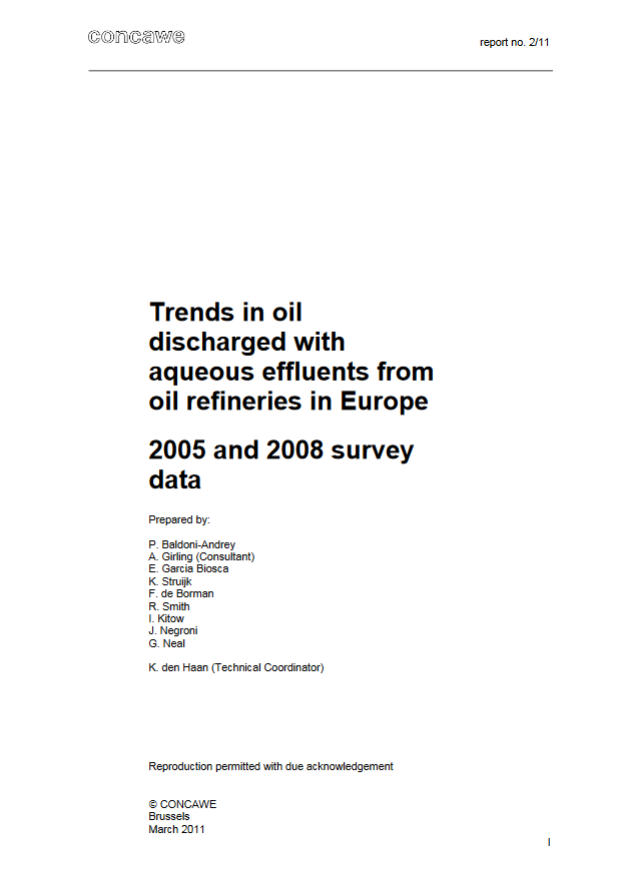
Reports
Trends in oil discharged with aqueous effluents from oil refineries in Europe 2005 and 2008 survey data
Report no. 2/11: This report summarises data gathered by CONCAWE in surveys of effluent water quantity, oil content and treatment processes for refinery locations situated in the EU-27 countries and t...

Reports
Environmental sensivity assessment of retail filling stations in selected European countries
Report no. 1/11: The environmental sensitivity of approximately 86,000 retail filling stations in 13 European countries has been assessed with regard to groundwater, surface water and ecological recep...

Reports
Advanced combustion for low emissions and high efficiency – Part 2: Impact of fuel properties on HCCI combustion
Report no. 10/10: A broad range of diesel, kerosene, and gasoline-like fuels has been tested in a single-cylinder diesel engine optimized for advanced combustion performance.These fuels were selected...